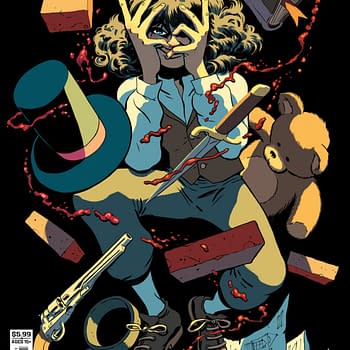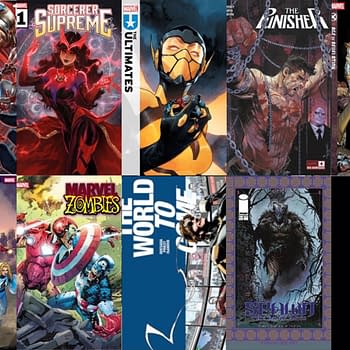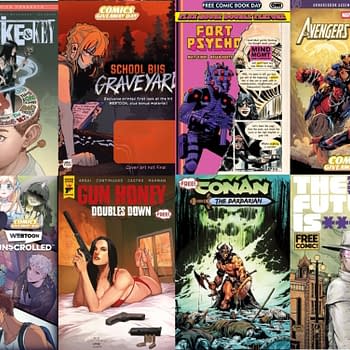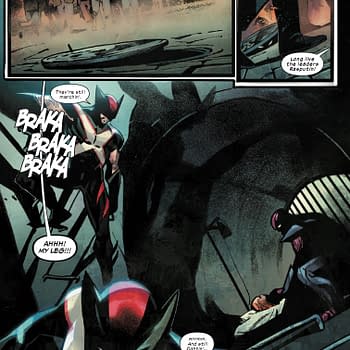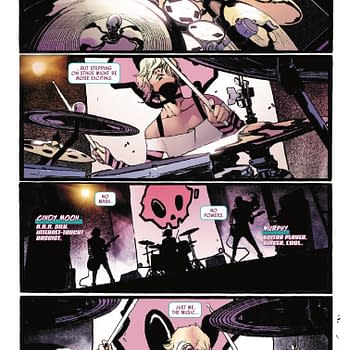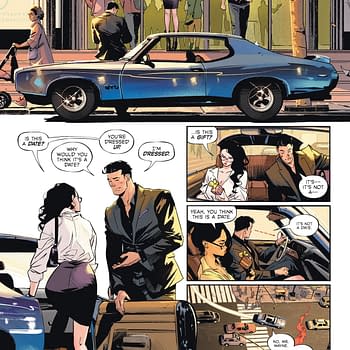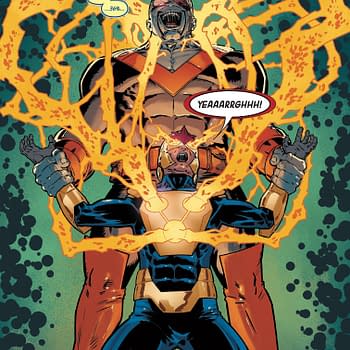Posted in: Comics | Tagged: Comics, dc, dennis o'neil, denny o'neil, how to write comics and graphic novels, How to write comics and graphic novels by Dennis O'Neil, marvel, MVL
How To Write Comics And Graphic Novels by Dennis O'Neil #15 And #16 – Double Sized Edition
 Dennis O'Neil has a long history in the comics industry as both a writer and editor. He's best known for writing Green Lantern/Green Arrow and Batman, through the seventies, Spider-Man in the eighties and for editing Batman-related titles in the nineties. A widely published novelist and screenwriter, he is currently lecturing at the NYU on Writing Comics And Graphic Novels. Bleeding Cool is grateful to receive a taster of the course every week.
Dennis O'Neil has a long history in the comics industry as both a writer and editor. He's best known for writing Green Lantern/Green Arrow and Batman, through the seventies, Spider-Man in the eighties and for editing Batman-related titles in the nineties. A widely published novelist and screenwriter, he is currently lecturing at the NYU on Writing Comics And Graphic Novels. Bleeding Cool is grateful to receive a taster of the course every week.
Last week's missive was lost in translation. So here is a double sized edition!
A Right Character
Harrison Ford: I look for the kernel of information in the scene that advances the story and try to figure out interesting behavior that will convey that kernel.
The excellent Mr. Ford is, of course, an actor. You, as writer, have a related but different chore—to create the scene which contains that vital kernel.
It might help if the character who finds the kernel is interesting, or admirable, or at least not a total cipher. And that brings us, long way around, to today's topic: characterization.
Someone may have told you, some time or other, that "character is action." That person didn't lie. In a way, it's false to speak of character and action/plot as though they're separate things. Think about it: what your characters do is the story.
Hold that thought; we'll return to it in a little while.
Psychologists tell us that we all have a dozen or so subpersonalites, other versions of ourselves that pop up from the murk when conditions are right. I suspect that some, if not most, of the characters we create are iterations of these murk-dwellers. (However, a suspicion is not a proof; take this for what its worth.)
Whether or not we have subpersonalities, and whether or not they're involved in fiction writing, is not necessarily relevant. There's another, kind of tried and true, approach to characterization that I, with almost excruciating cutsiness, call The Humdinger Four.
They are:
What does my character always want
Who or what does he love?.
Why does he involve himself in extreme situations.
What is he afraid of? (This last is courtesy of screenwriter Robert Towne.)
Answer those for questions and you may not have a great character, but you probably won't have a complete zero, either.
And now, as promised, back to character being action…even this involves a character's personality because characters (and flesh-and-blood people) use who and what they are to solve their problems. Sherlock Holmes will use brains; Conan the Barbarian or almost any hero that Governor Schwarzenegger ever embodied, will use action (and if you insist that "action" is a euphemism for "violence," I won't fight you over it); and Ghandi used moral suasion; and superheroes…well they use whatever special powers they have.
Your character's dominant trait, or traits, is/are usually and what he'll attack his problems with–what brings about a resolution to your plot. It's also what makes him/her/it interesting,
Up to now, what we've said about characterization applies to all your high-profile creations (though not necessarily to…oh, say, the doorman—unless that door-swinging bastard is the one who murdered the professor and stole the radioactive amethyst). But heroes and villains…they need a somewhat closer examination and that's why we'll return to them next week.
——
Uberplot Uber Alles:
I'm pretty sure that our television bretheren have evolved a vocabulary to discuss what I call, because I have nothing else to call it, the uberplot structure. If you get anywhere near series tv regularly, you're familiar with it: dthere is an overarching problem or question that the hero must confront—who killed his family? who framed her father? how will they get off the island?—and it takes the good guy(s) a whole season, or longer, to deal with it. That's what I call the uberplot. (Am I hoping somebody will believe I speak German? Not really.)
It's a good narrative strategy for the tube or—you guessed it!—comic books, or any other medium that has continuing characters and has to motivate an audience to return. Properly executed, it allows for the creation and sustaining of suspense, thus supplying the motivation mentioned above, and yet after every episode, the audience can feel thagt a story has been told here because while the hero has been fretting over the uberplot, he's also been attacking and overcoming some more immediate quandary. It is a fiction writer's version of having one's cake and eating it, too.
Uberplotting has been a staple of tv drama for quite a few years now, and in comics for even longer. (Maybe, if you catch me in a contentious mood, I'd even argue that Lois Lane's uberplot involved discovering Superman's secret identity.) Maybe we could consider using it more often in comics, to answer complaints that it's hard to get into a story when what you're looking at is a middle section entry in a long, long continuity.
So, hearken unto me, ye video toilers: Do you have something less clunky to call this kind of structure? Answer, we beseech thee, because these damned tenterhooks are itchy.
Forgive the brevity of this week's entry. We're fresh back from central Florida where we had a nifty time at the excellent Megacon, and we're rearranging our mental furniture to prepare for what looks like an interesting spring. I'll deliver extra wordage next week.
Dennis O'Neil teaches a ten week course on Writing Comics And Graphic Novels at the New York University. Classes are every Wednesday evening from 6.45pm to 9pm. For further information, please call NYU's School of Professional and Continuing Studies at Studies at 212 9987200








